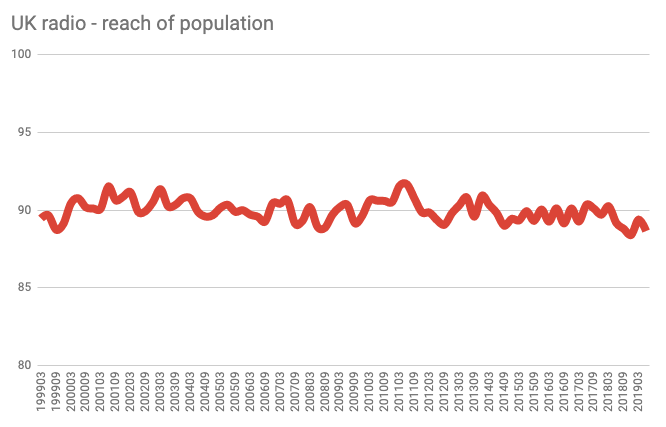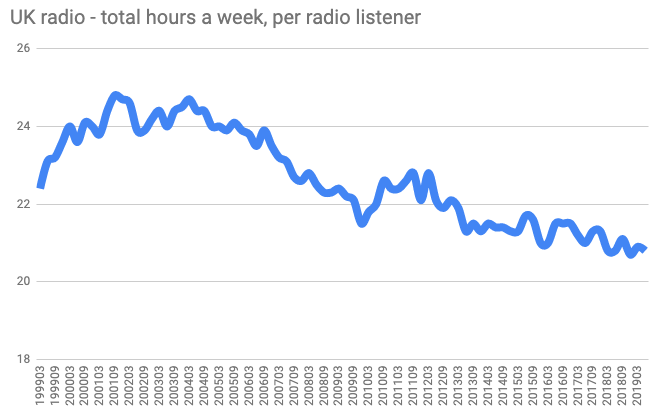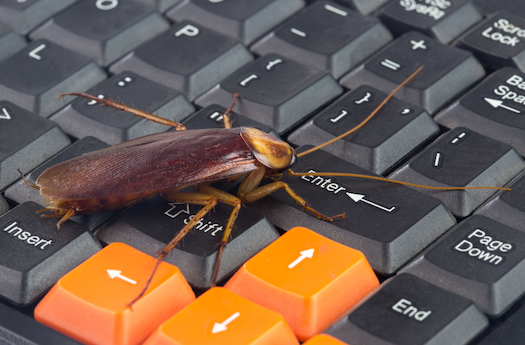Radio Tomorrow with James Cridland
I don’t much like talking about radio in negative terms. And I’d rather people didn’t compare radio, a medium I love, with a cockroach, an insect I hate.
Some cockroaches can live for a month without food, or even survive just using the glue from a postage stamp. And if you think a nuclear war might kill the things off, you’d not be right – they’re fifteen times more resistant to radiation than we are. Cockroaches are really hard to get rid of.
And radio? Well.
The UK has just seen its latest radio research. It’s interestingly complete data: a properly nationwide sample (unlike Australian or Malaysian data); measuring every radio station irrespective of whether it appears broken out in the figures below; it’s quite open about time-spent-listening as well as population reach (unlike the US or Canada); and the current research has been going since 1999 in much the same form, so it’s now got twenty years of data behind it, though the methodology has subtly changed through the years.
I took twenty years of research, and drew two graphs with it.
One graph shows the amount of people in the UK listening to radio. In 1999, 89% of the UK were listening to radio at least once every week. In 2019, twenty years later, the figure remains 89%.

In 1999, the fastest internet connection you could get in the UK was a 512kbps connection. Napster came in 1999, iTunes in 2003, Spotify in 2008. Back in 1999, mobile phones didn’t have wifi inside them, and 3G only came in 2003. YouTube launched in 2005; the iPhone only appeared in 2007. We’ve seen incredible change in the last twenty years – change that should, of course, have meant the death of radio.
But the second graph I drew shows the amount of time that radio listeners are listening to the radio per week. In 1999, it was 22.4 hours a week. The latest figures show 20.8 hours a week. Yes, this figure is falling, and we can probably expect it to continue to do so. But to have lost less than 10% in twenty years is nothing short of astonishing.

Sure, some will criticise the methodology (apparently, interviewing 100,000 people every single year – different people a year – isn’t enough). Some will point to the population getting older; others will point out a more severe drop in younger audiences. But all this misses the point – that, overall, radio is surprisingly resistant to any attempt to kill it.
We should be proud that radio is the cockroach of the media world; but probably prouder still that, unlike the cockroach, we continue to evolve.
About The Author
James Cridland, the radio futurologist, is a conference speaker, writer and consultant. He runs the media information website media.info and helps organise the yearly Next Radio conference. He also publishes podnews.net, a daily briefing on podcasting and on-demand, and writes a weekly international radio trends newsletter, at james.crid.land.




